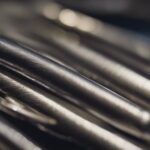- 7 Top Flite Golf Clubs XL for Improved Performance - September 28, 2024
- Top Flite Golf Clubs: Top 5 Reasons to Choose Them - September 28, 2024
- Top 3 Golf Club Fitters for a Perfect Swing - September 28, 2024
You're likely to be surprised that, despite their name, golf clubs aren't entirely made of iron, but rather a combination of metals and composites carefully selected to optimize performance. Stainless steel, titanium, and graphite are commonly used in golf clubs, each providing specific benefits for different types of clubs. Iron, however, is a dense, corrosion-resistant metal that serves as the primary material in some golf clubs, particularly irons and wedges. As you explore the world of golf clubs, you'll discover how the right material can substantially impact your game, and there's still more to uncover about the craftsmanship and technology that goes into creating the perfect club.
Key Takeaways
- Iron is a primary material in golf clubs, providing strength, durability, and precision for optimal performance.
- Not all golf clubs are made entirely of iron, as other materials like titanium, graphite, and composites are used in various components.
- Iron is commonly used in irons, hybrids, and putters due to its durability, ease of casting, and affordability.
- Carbon steel irons are known for their soft feel and precise control, while stainless steel is used in many irons for its durability and affordability.
- Forged irons are made from carbon steel, offering a softer feel and more precise control, but are generally more expensive than cast irons.
What Are Golf Clubs Made Of?
When you hold a golf club in your hands, you might wonder what materials go into its construction, and the answer lies in a combination of metals and composites that provide specific benefits for each type of club.
For instance, irons made from stainless steel are popular due to their durability, ease of casting, and affordability. This material is commonly used in irons and wedges because it can withstand the high impact of ball strikes, making it a reliable choice for golfers. Steel used in irons also allows for precise shaping, which is essential for achieving consistent results.
In contrast, titanium is often used in drivers and fairway woods due to its high strength-to-weight ratio, enabling larger club heads and increased forgiveness.
Meanwhile, graphite shafts are used in many golf clubs, particularly in drivers and fairway woods, due to their lightweight and flexible properties, which can increase swing speed and distance.
Understanding the materials used in golf clubs can help you make informed decisions when selecting the right club for your game.
Materials Used in Golf Clubs
As you explore the materials used in golf clubs, you'll notice that club head materials, shaft composition, and grip materials all play critical roles in the overall performance of your club.
You'll want to weigh the unique benefits and characteristics of each material, from the strength-to-weight ratio of titanium to the flexibility of graphite shafts.
Club Head Materials
You're spoiled for choice when it comes to golf club head materials, with modern clubs featuring a range of options that cater to different needs and preferences.
The selection of materials is vital, as each one offers unique benefits and properties.
Stainless Steel: A durable and affordable material used in many irons, hybrids, and putters. Two main types, 17-4 and 431, offer varying levels of hardness and corrosion resistance.
Titanium: A popular choice for driver heads due to its high strength-to-weight ratio, allowing for larger club heads and increased sweet spots.
Maraging Steel: A premium material used in some high-end clubs, particularly face inserts, due to its exceptional hardness and ability to produce thinner face inserts.
When choosing a golf club, understanding the materials used in the club head is essential. For instance, carbon steel irons are known for their soft feel and precise control, while stainless steel clubs offer durability and affordability.
Shaft Composition Matters
Most golfers understand that club head materials greatly impact their game, but shaft composition is equally crucial, with the right material making a substantial difference in your overall performance. When it comes to shaft composition, you have several options to weigh. The choice ultimately depends on your personal preferences, swing style, and the type of club you're using.
| Shaft Material | Characteristics |
|---|---|
| Graphite | Lightweight, high swing speed, soft feel, forgiving |
| Steel | Low torque, accurate, durable |
| Titanium | High strength-to-weight ratio, larger club heads, increased sweet spots |
| Aluminum | Lower cost, less durable, thicker walls |
Graphite shafts are ideal for drivers and fairway woods, providing a softer feel and more forgiveness. On the other hand, steel shafts are still commonly used in irons due to their lower torque, allowing for less clubhead twisting and better accuracy. Titanium is used in some golf clubs, particularly drivers, due to its high strength-to-weight ratio. As you ponder your shaft composition, remember that the right material can notably impact your game.
Grip Materials Used
With the right shaft composition in place, your attention turns to the grip, where materials play a significant role in shaping your overall golfing experience.
You'll find that grips are typically made from leather or rubber, with rubber being the most popular choice due to its moisture-resistance.
Three key things bear importance when it comes to grip materials:
- Material selection: Rubber and leather are the most common grip materials, but modern golf clubs also feature advanced materials like cord and synthetic blends to provide improved feel and control.
- Grip size: Grip sizes vary, with women's and junior's clubs often featuring smaller grips, while oversized grips are available for golfers with larger hands.
- Grip style and texture: The style and texture of your grip can also impact your performance, with some grips featuring ridges or other patterns to help with control and feel.
When choosing a grip, think about your personal preferences and playing style.
Some golfers prefer the feel of leather, while others prefer the durability of rubber.
You may also want to experiment with customizing your grip with tape or other materials to achieve a better fit and feel.
The Iron in Golf Clubs
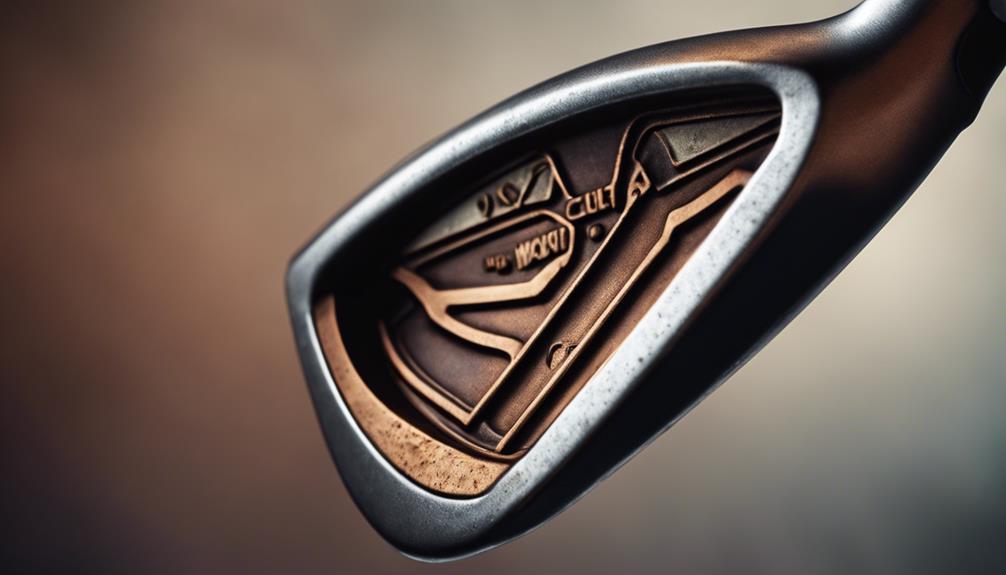
Iron, a dense, corrosion-resistant metal, serves as the primary material in golf clubs, providing the necessary strength, durability, and precision for golfers to achieve peak performance.
When you hold a golf club, you're likely grasping a combination of iron and other materials.
Modern irons, in particular, are crafted to optimize distance, forgiveness, and control.
You may have heard of cast irons, which are created by pouring molten metal into a mold. These irons are often more affordable and offer a larger sweet spot.
On the other hand, Forged irons are made by shaping and hammering hot metal, resulting in a more precise and consistent clubhead.
As you explore the world of golf, you'll discover that irons are designed to cater to different swing styles and preferences.
Understanding the characteristics of each type of iron can help you choose the right club for your game.
Casting Vs Forging Processes
As you explore the world of iron golf clubs, you'll notice that manufacturers use two distinct processes to create these precision instruments: casting and forging.
You're likely curious about the differences between these methods, and how they impact the performance of your clubs.
Let's take a closer look at the casting process, which involves pouring molten metal into a mold, and the forging method, which shapes a heated cylinder of metal into the desired form.
Casting Process Explained
You'll explore the intricacies of the casting process, a manufacturing method that involves pouring molten metal into a mold to create the desired golf club head shape. This process allows for complex geometries and precise control over the final product. In the case of golf clubs, irons are typically made from either stainless steel or titanium alloys, which are poured into a mold to create the desired shape.
The casting process involves several key steps.
- Pattern creation: A wax or plastic pattern is created in the shape of the desired golf club head.
- Investment casting: The pattern is coated with a refractory material, and then molten metal is poured into the mold.
- Casting removal: The mold is broken away, revealing the newly cast golf club head.
Through investment casting, manufacturers can produce high-quality golf clubs with precise weight distribution and intricate designs. This process allows for mass production of golf clubs with consistent quality and performance. As you venture deeper into the world of golf club manufacturing, you'll discover the unique advantages of casting and how it differs from forging.
Forging Method Details
When it comes to crafting golf clubs, manufacturers often opt for an alternative method to casting, one that involves shaping raw metal through intense force and heat, resulting in a distinctively different product with its own set of characteristics.
This forging process uses massive machines to hammer the raw metal into the desired shape, creating a softer feel and more expensive product compared to cast irons. You'll find that forged irons are made from carbon steel, a material that has been used for quality clubs since the 1800s, which is prone to rust if not properly maintained.
The heated cylinder is struck with a massive forging hammer to create the initial rough shape, followed by multiple strikes to create the molecular structure and smooth surface.
Forged irons have a more traditional design with a smaller sweet spot, requiring a more consistent swing to make accurate shots, making them suitable for low-handicappers. However, the forging process is limited with regard to design variations, making it more challenging to create perimeter weighting and other modern design features found in cast irons.
Benefits of Cast Irons
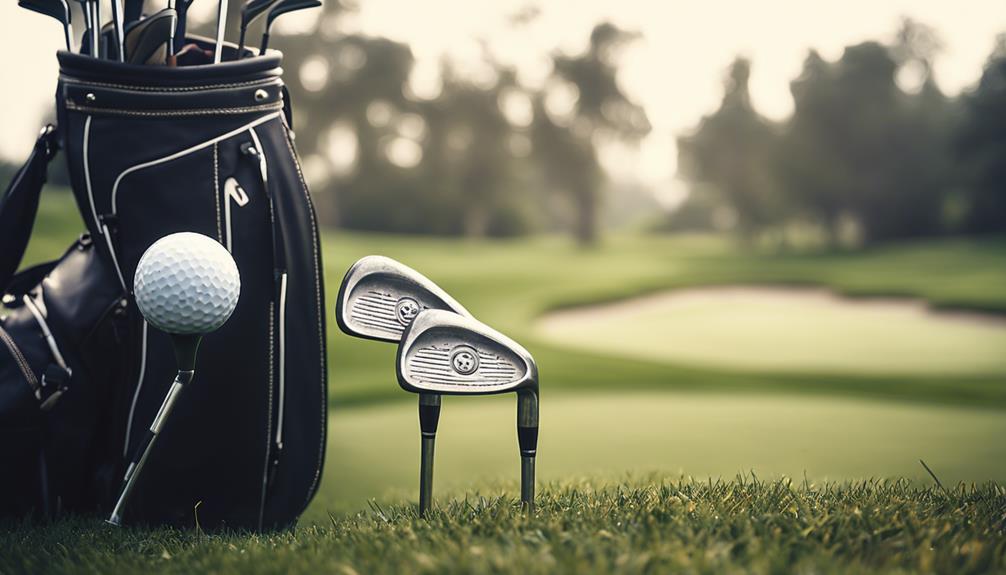
Most golfers will appreciate the advantages of cast irons, which provide a more forgiving and consistent performance compared to their forged counterparts. When it comes to game improvement, cast irons are an excellent choice for mid-to-high handicappers.
More forgiveness: Cast irons offer a larger sweet spot, making them more forgiving than forged irons. This means you'll see better results even when you don't hit the ball perfectly.
Consistent distance and accuracy: The solid, one-piece construction of cast irons distributes weight evenly throughout the clubhead, resulting in a more consistent distance and accuracy.
Reduced twisting: The offset hosel in cast irons reduces twisting, allowing for a more controlled swing and straighter shots.
Additionally, cast irons are generally less expensive than forged irons, making them a more accessible option for golfers on a budget.
With their wider sole, cast irons also prevent digging into the ground, making them ideal for golfers who tend to hit the ball fat.
Advantages of Forged Irons
While cast irons offer game-improving forgiveness, forged irons cater to skilled golfers who crave precision and control, providing a distinct set of advantages that reward a well-honed swing. As a golfer, you'll appreciate the softer feel of forged irons, courtesy of their carbon steel construction. This material has been used for quality clubs since the 1800s, providing a level of precision and control that's hard to match.
Here's a breakdown of the advantages of forged irons:
| Advantage | Description | Benefit |
|---|---|---|
| Softer Feel | Forged irons have a softer feel due to carbon steel construction | Improved control and precision |
| Weight Distribution | Forged irons have a more consistent weight distribution | Better balance and swing tempo |
| Craftsmanship | Forged irons offer a higher level of craftsmanship and attention to detail | Increased durability and performance |
| Customization | Forged irons allow for greater customization and flexibility in design | Unique club designs that cater to specific player preferences |
| Performance | Forged irons reward a well-executed shot with greater distance and accuracy | Improved overall game performance |
Types of Iron Golf Clubs
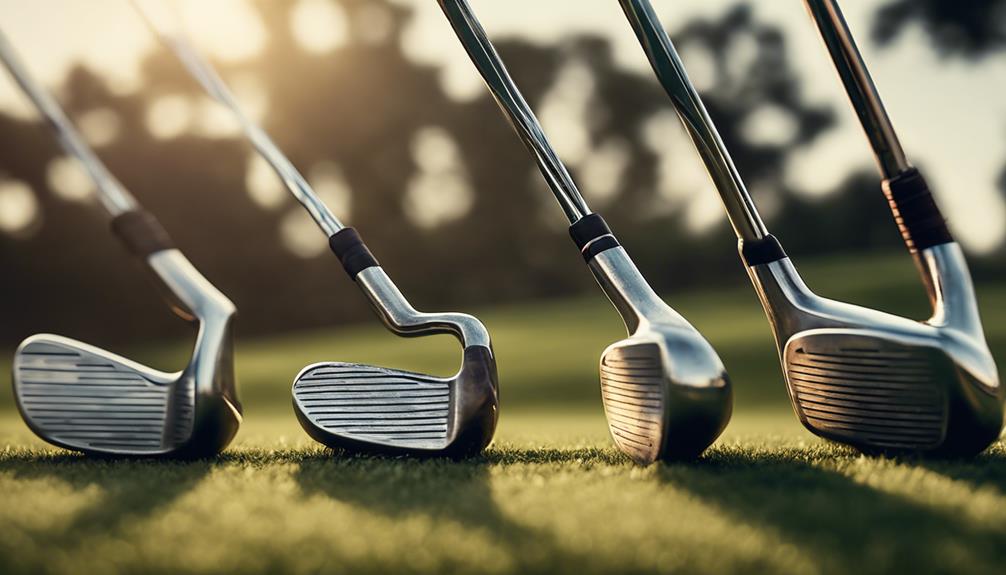
You'll encounter various types of iron golf clubs, each designed to serve a specific purpose in your game. Understanding the differences between them is essential to selecting the right club for your swing.
- Cast irons: Made from stainless steel, these irons combine iron with nickel and chromium, making them more durable and resistant to rust. They're often used in game-improvement irons and hybrid irons.
- Forged irons: Constructed from carbon steel, these irons are softer and more prone to rust than cast irons. However, they offer a more precise feel and control.
- Muscle back irons: A type of blade iron, muscle back irons have a solid metal back, providing a more consistent feel and greater workability.
Each type of iron golf club is designed to cater to different swing styles, preferences, and skill levels. By understanding the unique characteristics of each, you'll be better equipped to choose the right iron for your game.
Choosing the Right Iron
With a solid understanding of the different types of iron golf clubs, it's now time to focus on selecting the right one for your game, taking into account factors that will maximize your performance. When choosing the right iron, weigh factors such as shaft flex, club material, and adjustability to suit your swing speed and style.
Here's a breakdown of factors to examine when selecting an iron:
| Factor | Consideration |
|---|---|
| Shaft Flex | Graphite shafts provide more flex and forgiveness, while steel shafts offer more control and accuracy |
| Club Material | Game improvement irons are designed for golfers with higher handicaps, featuring larger heads and more forgiveness |
| Adjustability | Hybrids are a good choice for golfers who struggle with long irons, offering a more forgiving and easier-to-hit alternative |
| Bounce | Wedges come in different bounces, affecting the trajectory of the ball, so select a wedge with a bounce that suits your playing style and course conditions |
Common Misconceptions Debunked
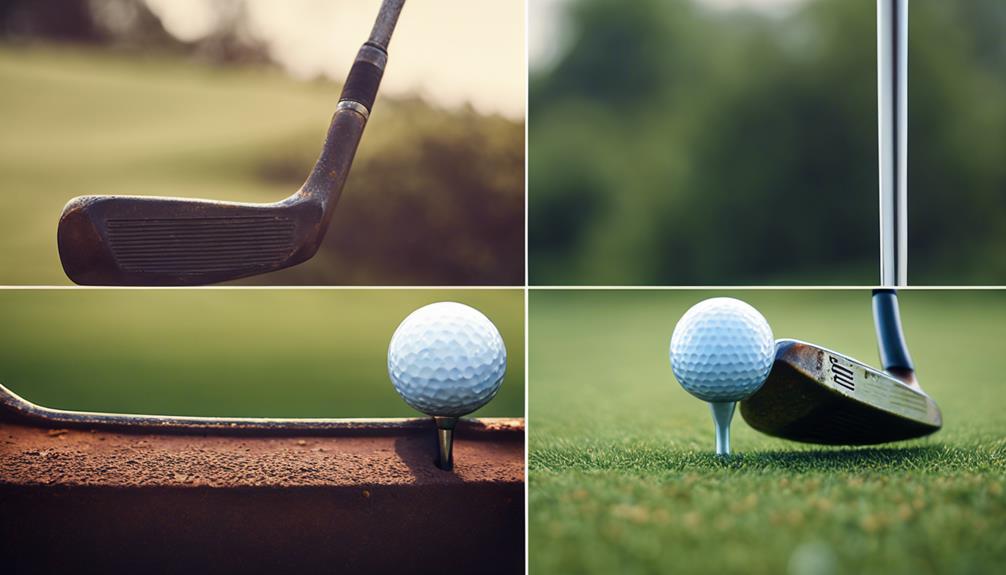
Debunking common misconceptions about golf clubs, let's set the record straight: modern golf clubs are not, in fact, made entirely of iron. You might be surprised to learn that the name 'iron' in golf clubs refers to a type of club used for shots from the fairway and rough, not the material it's made of.
Golf clubs are made of a combination of materials: modern golf clubs are constructed from a range of materials, including titanium, stainless steel, carbon graphite, and other metal compositions.
Iron was historically used for club heads: in the past, golf clubs were made from wood, with iron only used for the club heads. Today, iron is no longer the primary material used in golf clubs.
Performance materials have replaced iron: the use of iron as a primary material in golf clubs has largely been replaced by more durable and high-performance materials, such as titanium and stainless steel, which offer improved distance and accuracy through advanced designs like perimeter weighting.
Now that you know the truth, you can focus on mastering your game with the right types of golf clubs, made from the best materials for superior performance.
Frequently Asked Questions
What Is a Iron Club in Golf?
When you select an iron club in golf, you're choosing a precise tool for swing dynamics, understanding golf terminology like loft and groove technology helps you master club selection for superior performance on the fairway and rough.
What Metal Are Irons Made Of?
You're about to uncover a treasure trove of metals! When it comes to irons, you'll typically find them made from stainless steel, which is incredibly durable, or titanium alloys for a lighter touch. Metal forging brings carbon steel into the mix, offering a softer feel.
Why Is a 1 Iron so Hard to Hit?
You'll struggle with a 1 iron due to its tiny sweet spot location, requiring precise ball position and swing tempo consistency; a slight misalignment or variation in tempo will result in a poor shot, making it extremely challenging to master.
What Kind of Irons Does Tiger Woods Use?
You're curious about Tiger's iron game, huh? Well, he wields custom TaylorMade P7TW irons, tailored to his swing's unique demands through meticulous iron fitting, courtesy of lucrative sponsorship deals that make your wallet weep.
Conclusion
As you step onto the green, your trusty irons by your side, remember that the age-old debate – are golf clubs made of iron? – is more than just a question of material.
It's a choice between precision and power, between art and science.
Forged or cast, the iron in your golf clubs is the heartbeat of your game, pulsing with every swing, every shot.
So, choose wisely, and let your irons be the rhythm that drives you to victory.



